PRESCRIPTION PAINKILLER ABUSE
While the use of many street drugs is on a slight decline in the US, abuse of prescription drugs is growing. In 2007, 2.5 million Americans abused prescription drugs for the first time, compared to 2.1 million who used marijuana for the first time.
Among teens, prescription drugs are the most commonly used drugs next to marijuana, and almost half of the teens abusing prescription drugs are taking painkillers.
Why are so many young people turning to prescription drugs to get high?
By survey, almost 50% of teens believe that taking prescription drugs is much safer than using illegal street drugs.
What is not known by most of these young people is the risk they are taking by consuming these highly potent and mind-altering drugs. Long-term use of painkillers can lead to dependence, even for people who are prescribed them to relieve a medical condition but eventually fall into the trap of abuse and addiction.
In some cases, the dangers of painkillers don’t surface until it is too late. In 2007, for example, abuse of the painkiller Fentanyl killed more than 1,000 people. The drug was found to be thirty to fifty times more powerful than heroin.
WHAT ARE PAINKILLERS?
Prescription painkillers are powerful drugs that interfere with the nervous system’s transmission of the nerve signals we perceive as pain. Most painkillers also stimulate portions of the brain associated with pleasure. Thus, in addition to blocking pain, they produce a “high.”
The most powerful prescription painkillers are called opioids, which are opium-like1compounds. They are manufactured to react on the nervous system in the same way as drugs derived from the opium poppy, like heroin. The most commonly abused opioid painkillers include oxycodone, hydrocodone, meperidine, hydromorphone and propoxyphene.
Oxycodone has the greatest potential for abuse and the greatest dangers. It is as powerful as heroin and affects the nervous system the same way. Oxycodone is sold under many trade names, such as Percodan, Endodan, Roxiprin, Percocet, Endocet, Roxicet and OxyContin. It comes in tablet form.
Hydrocodone is used in combination with other chemicals and is available in prescription pain medications as tablets, capsules and syrups. Trade names include Anexsia, Dicodid, Hycodan, Hycomine, Lorcet, Lortab, Norco, Tussionex and Vicodin. Sales and production of this drug have increased significantly in recent years, as has its illicit use.
Meperidine (brand name Demerol) and hydromorphone (Dilaudid) come in tablets and propoxyphene (Darvon) in capsules, but all three have been known to be crushed and injected, snorted or smoked. Darvon, banned in the UK since 2005, is among the top ten drugs reported in drug abuse deaths in the US. Dilaudid, considered eight times more potent than morphine, is often called “drug store heroin” on the streets.
“At the age of 20, I became an addict to a narcotic,2 which began with a prescription following a surgery. In the weeks that followed [the operation] in addition to orally abusing the tablet, crushing it up enabled me to destroy the controlled release mechanism and to swallow or snort the drug. It can also be injected to produce a feeling identical to shooting heroin. The physical withdrawal from the drug is nothing short of agonizing pain.” —James
UNDERSTANDING WHY PAINKILLERS BECOME SO ADDICTIVE
Family members protest deadly painkillers. Rehab experts say addiction to powerful painkillers such as OxyContin is among the hardest of all to kick.
Photo credit: OxyABUSEKills.com
Photo credit: OxyABUSEKills.com
Opioid painkillers produce a short-lived euphoria, but they are also addictive.
Long-term use of painkillers can lead to physical dependence. The body adapts to the presence of the substance and if one stops taking the drug abruptly, withdrawal symptoms occur. Or the body could build up a tolerance to the drug, meaning that higher doses have to be taken to achieve the same effects.
Like all drugs, painkillers simply mask the pain for which they are taken. They don’t “cure” anything. Someone continuously trying to dull the pain may find himself taking higher and higher doses—only to discover that he cannot make it through the day without the drug.
Symptoms of withdrawal can include restlessness, muscle and bone pain, insomnia, diarrhea, vomiting, cold flashes with goose bumps (known as “cold turkey”), and involuntary leg movements.
One of the serious risks of opioids is respiratory depression—high doses can cause breathing to slow down to the point it stops and the user dies.
“I am addicted to prescription pain medication. I first started taking prescription painkillers [some] years ago when my doctor prescribed them to treat post-surgical pain following spinal surgery....Over the past several years I have tried to break my dependence on pain pills and, in fact, twice checked myself into medical facilities in an attempt to do so.
[I have] recently agreed with my physician about the next steps.”
— Excerpted from radio commentator Rush Limbaugh’s on-air statement, Friday, Oct. 10, 2003, according to Premiere Radio, his broadcaster.
OXYCONTIN THE “HILLBILLY HEROIN”
Because it reacts on the nervous system like heroin or opium, some abusers are using one brand of oxycodone painkiller, OxyContin, as a substitute for, or supplement to, street opiates like heroin.
Armed robberies of pharmacies have occurred where the robber demanded only OxyContin, not cash. In some areas, particularly the Eastern United States, OxyContin has been the drug of greatest concern to law enforcement authorities.
OxyContin, widely known as “hillbilly heroin” because of its abuse in Appalachian communities, has emerged as a major crime problem in the US. In one county, it was estimated that addiction to this drug was behind 80% of the crime.
“I didn’t think I had a ‘drug’ problem—I was buying the tablets at the chemist [drugstore]. It didn’t affect my work. I would feel a bit tired in the mornings, but nothing more. The fact that I had a problem came to a head when I took an overdose of about forty tablets and found myself in the hospital. I spent twelve weeks in the clinic conquering my addiction.” —Alex
MENTAL & PHYSIOLOGICAL EFFECTS OF PAINKILLERS
- Constipation
- Nausea
- Vomiting
- Dizziness
- Confusion
- Addiction
- Unconsciousness
- Respiratory depression
- Increased risk of heart attack
- Coma
- Death
“Pretty much as long as I can remember I’ve had highs and lows. I would get easily upset by the littlest things, I would have anger outbursts, or hate someone for no reason at all. For a long while I had thought I was bipolar. I started using drugs last October to help me with my unwanted feelings. But believe it or not, it just made stuff worse! I had to now deal with my addiction and my emotional problems.” —Thomas
PAINKILLERS: A SHORT HISTORY
Highly addictive opiates, derived from the opium poppy, have been used for thousands of years for both recreational and medicinal purposes.
Photo credit: AP Wideworld
Opiates, originally derived from the opium poppy, have been used for thousands of years for both recreational and medicinal purposes. The most active substance in opium is morphine—named after Morpheus, the Greek god of dreams. Morphine is a very powerful painkiller, but it is also very addictive.
In the sixteenth century, laudanum, opium prepared in an alcoholic solution, was used as a painkiller.
Morphine was first extracted from opium in a pure form in the early nineteenth century. It was used widely as a painkiller during the American Civil War, and many soldiers became addicted.
Codeine, a less powerful drug that is found in opium but can be synthesized (man-made), was first isolated in 1830 in France by Jean-Pierre Robiquet, to replace raw opium for medical purposes. It is used mainly as a cough remedy.
Morphine, the most active substance in opium, is a very powerful painkiller that hooked many US Civil War soldiers.
Photo credit: AP Wideworld
Throughout the early nineteenth century, the recreational use of opium grew and by 1830, the British dependence on the drug reached an all-time high. The British sent warships to the coast of China in 1839 in response to China’s attempt to suppress the opium traffic, beginning the “First Opium War.”
In 1874, chemists trying to find a less addictive form of morphine made heroin. But heroin had twice the potency of morphine, and heroin addiction soon became a serious problem.
The US Congress banned opium in 1905 and the next year passed the Pure Food and Drug Act requiring contents labeling on all medicines.
Methadone was first synthesized in 1937 by German scientists Max Bockmühl and Gustav Ehrhart at the IG Farben company. They were searching for a painkiller that would be easier to use during surgery, with less addiction potential than morphine or heroin.
Yet methadone is believed by many to be even more addictive than heroin.
Meanwhile, the illegal opium trade boomed. By 1995, Southeast Asia was producing 2,500 tons annually.
New painkillers came on the market with approval from the Food and Drug Administration: Vicodin in 1984, OxyContin in 1995 and Percocet in 1999.
These are all synthetic (man-made) opiates which mimic (imitate) the body’s own painkillers.
INTERNATIONAL STATISTICS
Among those using illicit drugs for the first time in 2007, the most popular substances were marijuana and prescription painkillers—each used by roughly the same number of Americans aged 12 and older. Non-medical use of painkillers rose 12%.
One in ten high school seniors in the US admits to abusing prescription painkillers.
Misuse of painkillers represents three-fourths of the overall problem of prescription drug abuse. The painkiller hydrocodone is the most commonly diverted and abused controlled pharmaceutical in the US.
Methadone, once used in addiction treatment centers and now used by doctors as a painkiller, was found as the cause of 785 deaths in one state alone, Florida, in 2007.
Prescription drug abuse is also climbing in older Americans, particularly involving anti-anxiety drugs such as Xanax and painkillers such as OxyContin.
In the UK, tens of thousands of people are said to be dependent on painkillers such as Solpadeine and Neurofen Plus.
Doctors and rehabilitation therapists report that prescription painkiller abuse is one of the most difficult addictions to treat.
WARNING SIGNS OF PRESCRIPTION PAINKILLER DEPENDENCY
Most commonly prescribed painkillers (OxyContin, Vicodin, Methadone, Darvocet, Lortab, Lorcet and Percocet), while offering relief from pain, can also cause individuals’ bodies to start “needing” the drugs in order to feel just “normal.”
Here are ten warning signs to watch for if you think someone you know may be experiencing a dependency on these drugs:
1. Usage increase: increase of one’s dose over time, as a result of growing tolerant to the drug and needing more to get the same effect.
2. Change in personality: shifts in energy, mood, and concentration as a result of everyday responsibilities becoming secondary to the need for the drug.
3. Social withdrawal: withdrawal from family and friends.
4. Ongoing use: continued use of painkillers after the medical condition they were meant to relieve has improved.
5. Time spent on obtaining prescriptions: spending large amounts of time driving great distances and visiting multiple doctors to obtain the drugs.
6. Change in daily habits and appearance: decline in personal hygiene; change in sleeping and eating habits; constant cough, running nose and red, glazed eyes.
7. Neglects responsibilities: neglect of household chores and bills; calling in sick to school or work more often.
8. Increased sensitivity: normal sights, sounds and emotions becoming overly stimulating to the person; hallucinations.
9. Blackouts and forgetfulness: forgetting events that have taken place and experiencing blackouts.
10. Defensiveness: becoming defensive and lashing out in response to simple questions in an attempt to hide a drug dependency, if users feel their secret is being discovered.
Source: http://www.drugfreeworld.org/


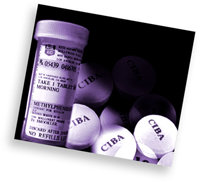

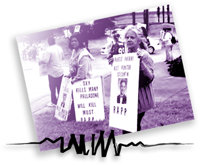

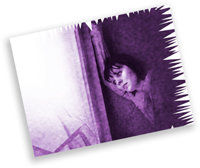


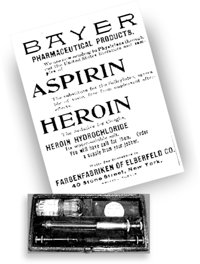

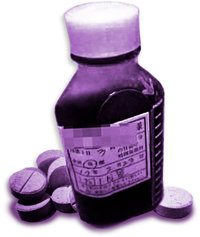
No comments:
Post a Comment